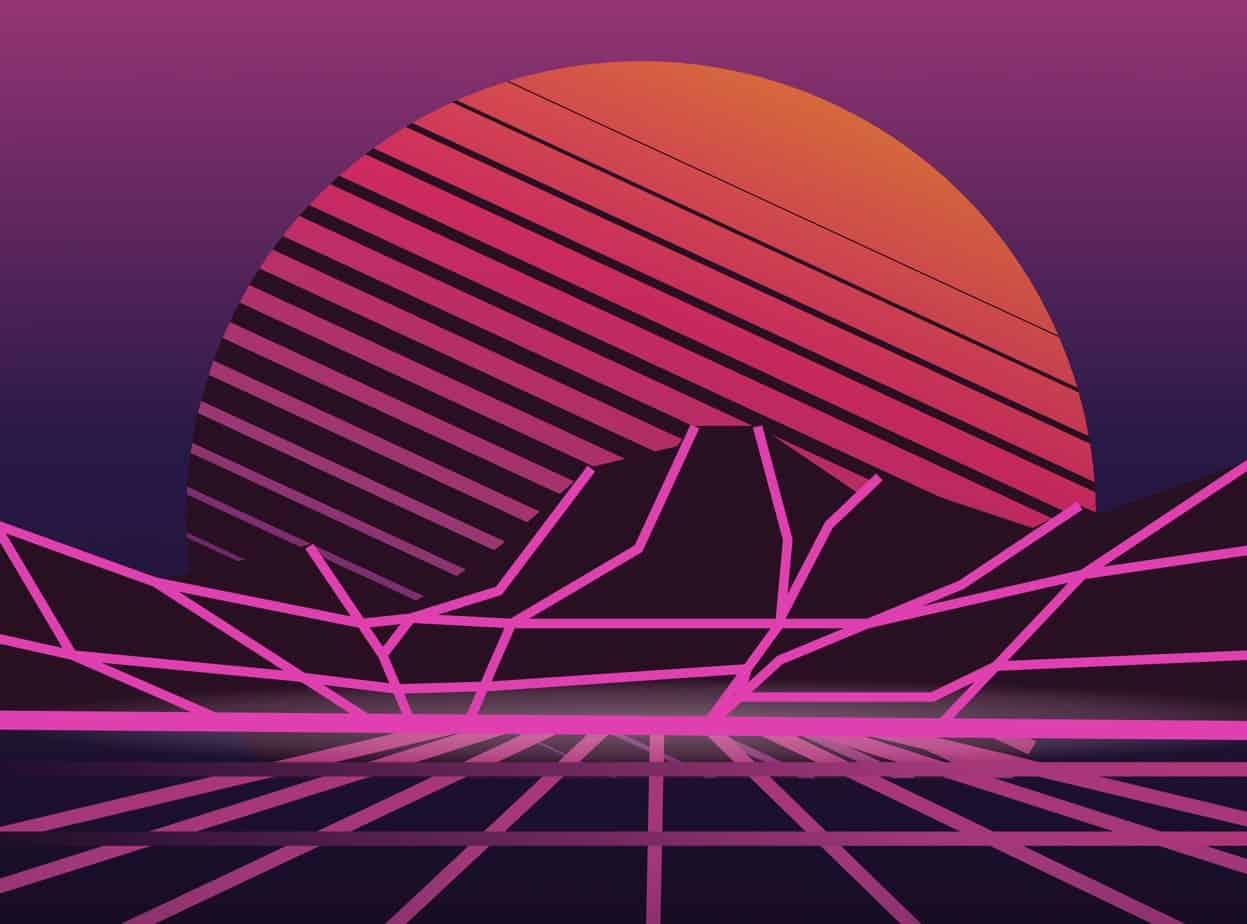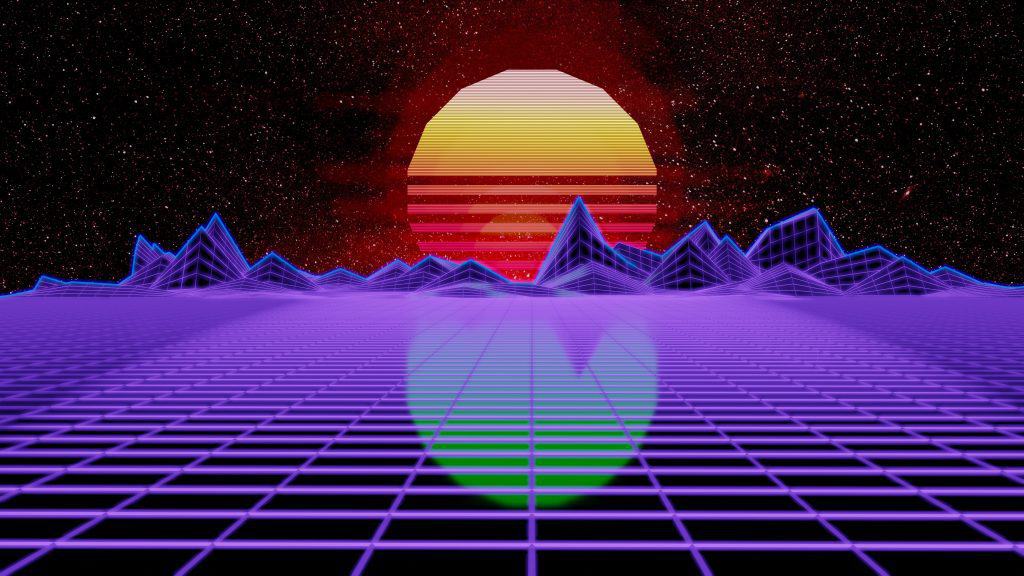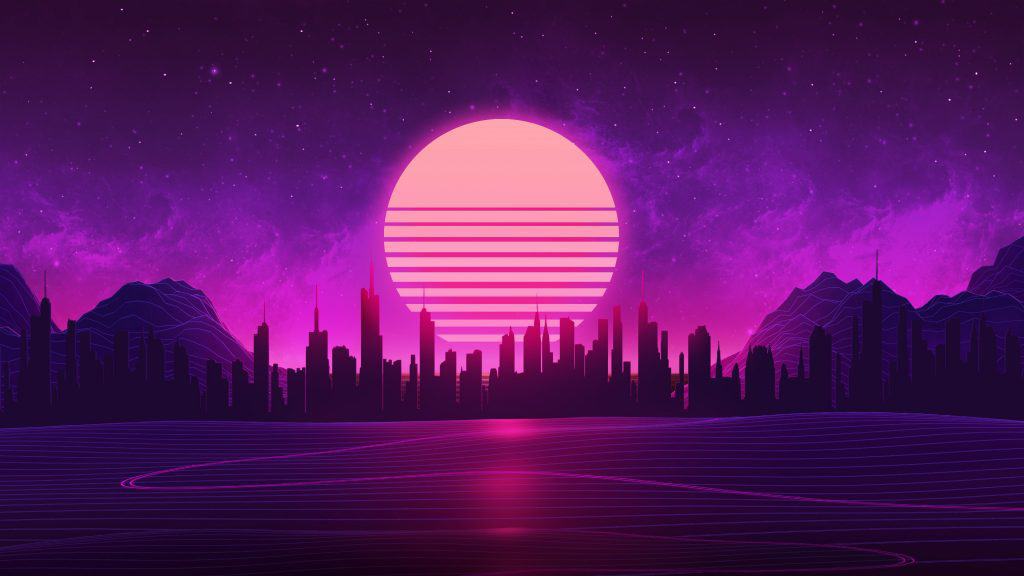No products in the cart.

If you’re into modern music, chances are you’ve heard these two terms. In short, both of them are genres of music, mainly electrical music, but are also accompanied by retro arts inspired from the past. If you’re not familiar with the word “Retro”, it is a pop genre where past arts and histories are used as nostalgia.
Synthwave and Vaporwave are easy to trace but somewhat difficult to separate for the newbies. To understand the key differences between synthwave vs vaporwave, let’s dig deep!
Synthwave is also widely known as “Outrun” or “Retrowave”, although there are minor differences. It traces back to the 1986 SEGA game named “Outrun” which offered a unique musical experience. Synthwave started to shape in the mid-2000s by some popular artists like Justice and College.
Vaporwave started its journey in the early 2010s as an internet culture that criticized capitalism at its core.
As a music genre, the best way to learn about these is to experience them in person. Vaporwave and synthwave take different approaches to the attitude, combination, and taste of what we as audiences experience.
Vaporwave criticizes capitalism by combining other mass-produced music from the 80s and 90s tracks, and edit them in a manner where the end products are unique from the original. This is where you see conventional music tracks getting chopped off, slowed down, and fast-forwarded numerous times. Followed with the retro art choices, the feel or “Timbre” of the music is nothing like the original one, and copyrights are irrelevant. At its core, vaporwave is satirical.
On the other hand, synthwave takes a different approach but still relies on the 80’s elements. Whereas vaporwave’s satire takes on capitalism makes us wonder about the endgame, synthwave celebrates nostalgia and the simpler past lives. No capitalism means synthwave also uses fewer samples than vaporwave. This is because the origin of synthwave is closer to the 80s and 90s life itself.
If you want to distinguish the two genres by only listening to the audio, you’ll notice that vaporwave relies heavily on other music properties (as mentioned before) and tends to slow them more with the effects of retro-fill. This approach of creation is known as the “Plunderphonic approach”. Synthwave often has a faster rate of tempo than the other. If we talk about the audio processing, synthwave is also smoother in effects mainly because mashing up multiple other pieces of music requires heavier processing on vaporwave’s part.
Talking about the taste of the sound, when you hear outrun tracks, you’ll notice a lot of emphasis on the movie cultures of the 80s, mainly sci-fi and action movies, because we’re celebrating that particular time. The satirical approach of vaporwave makes it use more of a depressing and spiritual sound.
Differences aside, to maintain a connection to the past, both of them use audio elements of that time, like the sound of an old Windows or Mac booting up, mail notifications, retro gaming, Nintendo, and many more.
Here comes the segment of retro art and how both genres use them differently. The visual counterpart of these retro-filled music videos is popularly known as A E S T H E T I C with spaces within every letter. A E S T H E T I C is where you see the 80’s and 90’s pop art elements, bright distinctive paintings, and the works.
Looking at a synthwave or Outrun video, you’ll see stylized texts like heavily bolded or graffiti-shaped ones, exotic cars going through a sci-fi gridline, and an overall darker color theme than vaporwave ones, which prefer a lighter theme with pastel colors. Synthwave also gained traction at a whole new level with the release of GTA Vice City back then, and the movie “Drive” starring Ryan Gosling. Outrun aesthetic also contains higher quality and less pixelated pictures than vaporwave.

Vaporwave aesthetic mostly contains low-quality pixelated images reminiscing back when computers and printers were emerging, glitch effects, and broken down images. We even see fonts of early age like the infamous “Times New Roman” font heavily used in Microsoft systems back then. Artists also mix some Japanese or other Asian texts with shallow meanings, but unlike the Retrowaves, here the font is mostly not stylized but in stock structure. Grids are also present here, but mostly the Japanese tuner cars dominate that area. Vaporwave also uses pictures of popular statues.

As mentioned earlier, the best way to learn about these is to experience them firsthand. Currently, both genres are extremely popular and YouTube is flooding with them alongside meme cultures.
Popular Outrun artists and bands include Vangelis, Scandroid, Dance with the dead, John Carpenter, The Bad Dreamers, Gunship, and many more. Synthwave consists of lots of subgenres like Outrun, Retrowave, Cyberpunk, Darksynth, Popwave, Spacewave, etc.
Vaporwave also has a rich base and subgenres. Albums like Far Side Virtual, Blank Banshee, Floral Shoppe, Eccojams, Macintosh Plus, and more. Popular subgenres include Vaportrap, Future Funk, VHS Pop, Hypnagogic Pop, Mallsoft, Utopian Virtual, etc. We even hear of “Simpson wave” coming from the famous TV show, The Simpsons.
The difference between synthwave vs vaporwave relies on the tastes of the artists, but here I’ve depicted certain elements or traits to distinguish one from another. Both of them are best experienced when you see and hear the art at the same time. At the first shot, it may or may not seize your choices, but both of them are extremely unique and bold in their own ways. Reasons like these are making synthwave and vaporwave very popular among other genres.
